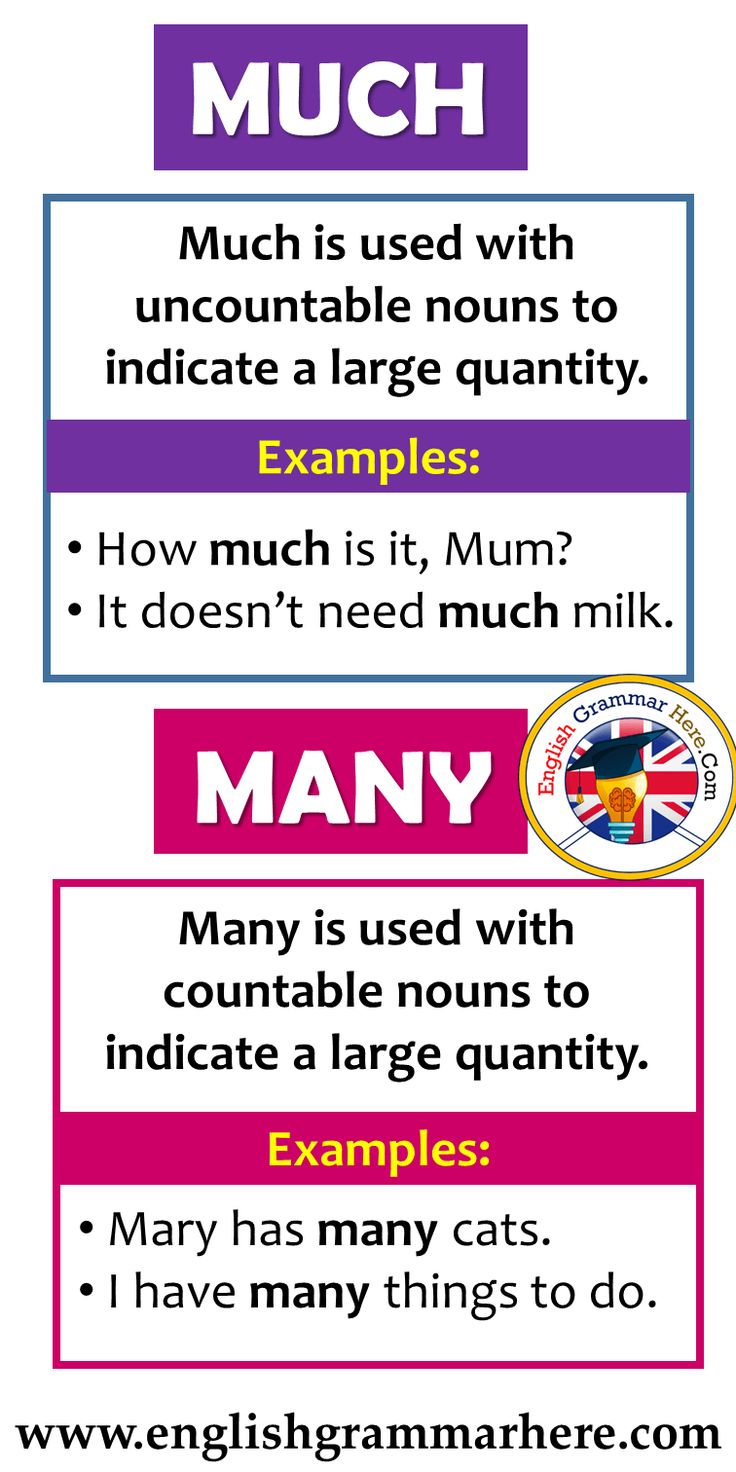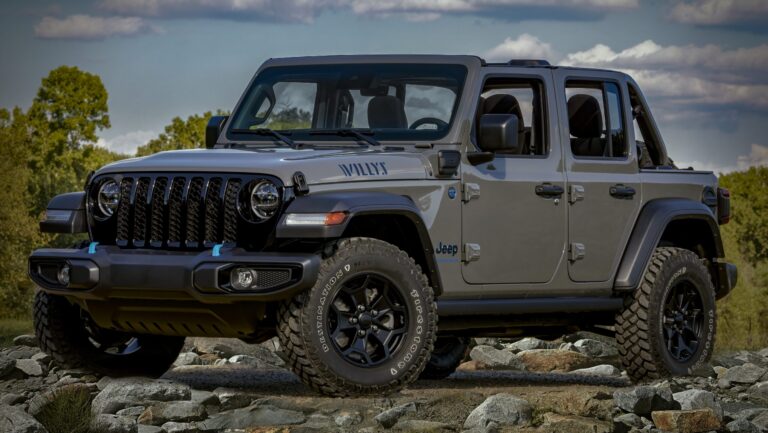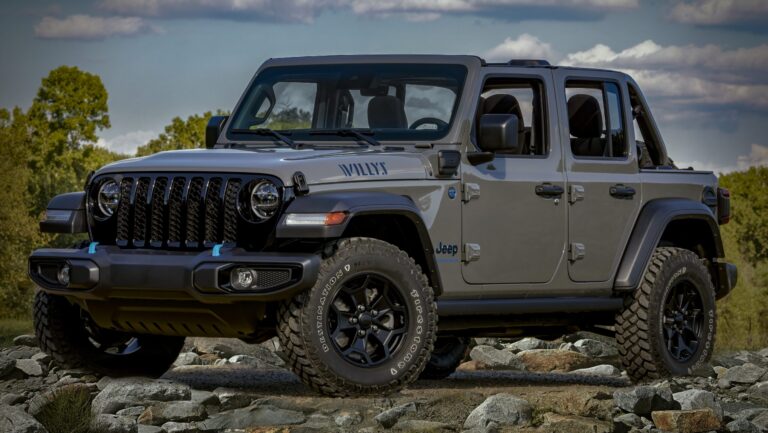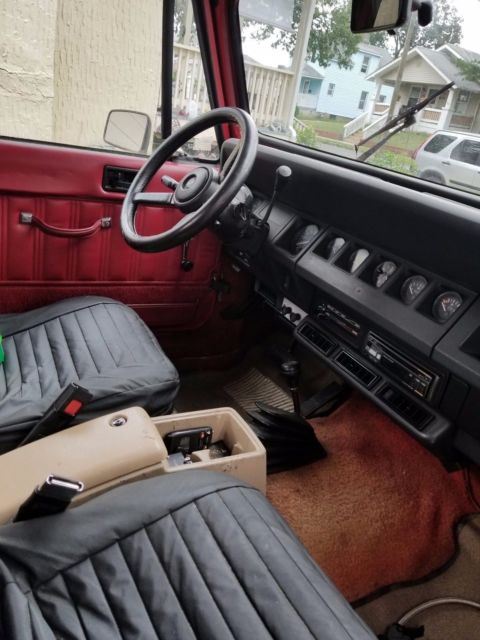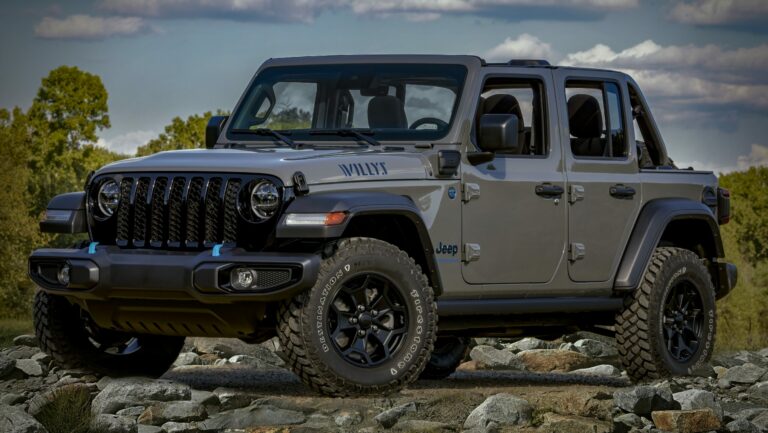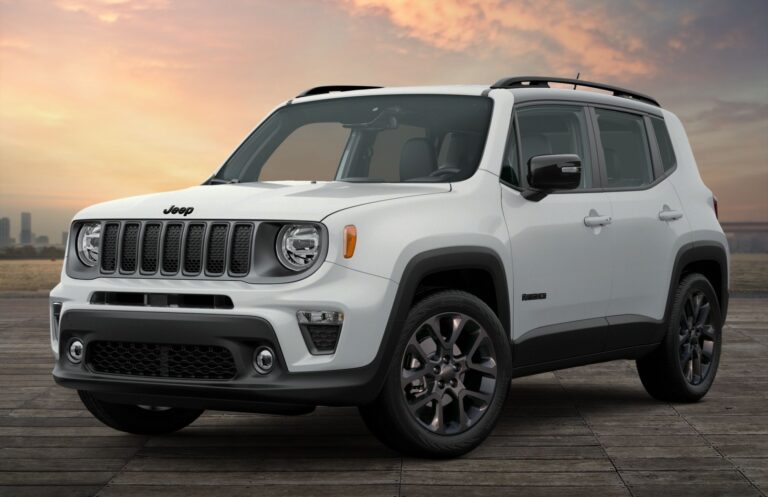How Much Does A Lift Kit For A Jeep Wrangler Cost? A Comprehensive Guide
How Much Does A Lift Kit For A Jeep Wrangler Cost? A Comprehensive Guide jeeps.truckstrend.com
The iconic Jeep Wrangler, with its unparalleled off-road prowess and rugged good looks, is a vehicle often destined for modification. Among the most popular upgrades, a lift kit stands out, transforming a capable trail machine into an even more formidable beast. But before you dive into the world of enhanced ground clearance and massive tires, a crucial question arises: "How much does a lift kit for a Jeep Wrangler cost?"
The answer, unfortunately, isn’t a simple number. It’s a spectrum, ranging from a few hundred dollars to well over ten thousand, depending on the type of lift, the components included, the desired height, the quality of parts, and whether you opt for professional installation or tackle it yourself. This comprehensive guide will break down the costs, factors, and considerations involved, helping you budget wisely for your Wrangler’s transformation.
How Much Does A Lift Kit For A Jeep Wrangler Cost? A Comprehensive Guide
Understanding the "Why": The Benefits of a Lift Kit
Before delving into the dollars and cents, it’s worth understanding why so many Wrangler owners choose to lift their vehicles. The primary benefits include:
- Increased Ground Clearance: Essential for navigating rocky terrain, deep ruts, and obstacles without damaging the undercarriage.
- Accommodating Larger Tires: A lift kit creates the necessary fender clearance to install bigger, more aggressive tires, which significantly improve traction and off-road capability.
- Improved Articulation: Higher-quality lift kits enhance the suspension’s ability to flex and keep tires on the ground over uneven terrain, boosting stability and control.
- Aggressive Aesthetic Appeal: Let’s be honest, a lifted Wrangler with big tires just looks incredibly cool and purposeful.

Factors Influencing Lift Kit Costs
The price tag of a Jeep Wrangler lift kit is a complex equation influenced by several key variables. Understanding these will help you navigate the myriad of options available.
1. Type of Lift Kit
This is arguably the most significant cost determinant. Lift kits are categorized by their complexity and the components they replace or add:
- Spacer Lifts (Budget Boosts/Leveling Kits):
- What they are: These are the most affordable and simplest lifts. They involve installing polyurethane or aluminum spacers above your factory coil springs or between the frame and body (body lifts, less common for Wranglers). They lift the vehicle without changing the factory ride quality significantly, as they retain the original springs and shocks.
- Cost Range (Kit Only): $100 – $400
- Best for: Achieving a level stance, fitting slightly larger tires (up to 33 inches on most models), or purely aesthetic purposes.

- Coil Spring Lifts:
- What they are: These kits replace your factory coil springs with taller, often stiffer or softer, aftermarket springs. They provide a true suspension lift and can be paired with your existing shocks (with extensions) or new, longer shocks.
- Cost Range (Kit Only): $400 – $1,800
- Best for: Improved off-road performance, better ride quality (depending on shock choice), and accommodating 33-35 inch tires.
- Short Arm Suspension Lifts:
- What they are: These are comprehensive kits that typically include new coil springs, longer shocks, and often new control arms (fixed or adjustable), track bars, sway bar links, and bump stops. They are designed to correct suspension geometry after lifting.
- Cost Range (Kit Only): $1,500 – $3,500
- Best for: Serious off-roading, excellent articulation, and accommodating 35-37 inch tires.
- Long Arm Suspension Lifts:
- What they are: The most extensive and expensive suspension lifts. They relocate the control arm mounting points further back on the frame, using longer control arms. This provides significantly improved suspension geometry, better articulation, and a smoother ride, especially on highly uneven terrain. They often require welding and extensive modification.
- Cost Range (Kit Only): $3,500 – $8,000+
- Best for: Extreme rock crawling, competitive off-roading, and accommodating 37+ inch tires with optimal performance.
- Coilover Conversions:
- What they are: The ultimate in suspension performance, replacing coil springs and shocks with integrated coilover units. These are highly customizable and often involve custom fabrication.
- Cost Range (Kit Only): $5,000 – $15,000+
- Best for: Professional-level off-roading, desert racing, or enthusiasts seeking the absolute best in ride quality and adjustability.

2. Lift Height
Generally, the higher the lift, the more expensive the kit, because more components need to be replaced or modified to maintain proper suspension geometry and safety.
- 1-2 Inch Lifts: Often spacer kits, sometimes basic coil replacements. Minimal additional components needed.
- 2.5-3.5 Inch Lifts: Typically coil spring kits, often requiring adjustable track bars, longer shocks, and extended bump stops. Driveshaft angles might become an issue on some models (e.g., JK Wranglers), potentially necessitating a new front driveshaft.
- 4+ Inch Lifts: Almost always require full suspension replacement, including adjustable control arms, new driveshafts (front and often rear), steering correction components (drag link, tie rod), and sometimes even upgraded axles or gearing.
3. Components Included in the Kit
The quality and type of components bundled in a kit significantly affect the price.
- Shocks: Basic twin-tube shocks are cheaper than performance monotube shocks or high-end reservoir shocks (e.g., Fox, King, Bilstein).
- Control Arms: Fixed control arms are cheaper than adjustable ones, but adjustable arms are crucial for correcting caster and pinion angles on higher lifts.
- Track Bars: Adjustable track bars are often necessary to re-center the axle after a lift.
- Brake Line Extensions/Relocation Brackets: Important for safety to prevent stretching brake lines at full suspension droop.
- Bump Stops: Essential for preventing over-compression of the suspension.
- Sway Bar Links: Longer links are needed to prevent the sway bar from binding.
- Driveshafts: For lifts 2.5 inches and above (especially on JK/JL), aftermarket driveshafts are often needed to prevent vibration and premature wear due to altered driveline angles.
- Steering Correction: Drag link and tie rod upgrades may be necessary for proper steering geometry and preventing "death wobble."
4. Brand Reputation and Quality
Just like any product, some brands command a higher price due to their reputation for quality, durability, and performance (e.g., TeraFlex, AEV, Rock Krawler, MetalCloak, Old Man Emu). Budget brands might offer lower initial costs but could compromise on longevity, ride quality, or customer support.
5. Jeep Wrangler Model/Year
The specific generation of your Wrangler (YJ, TJ, JK, JL) can influence component availability and cost. Newer models often have more sophisticated electronics and suspension designs, which can sometimes lead to more complex and expensive lift kits.
DIY vs. Professional Installation: Cost Implications
Beyond the cost of the kit itself, installation is a major budget consideration.
- DIY Installation:
- Pros: Saves on labor costs, allows you to learn about your vehicle, and provides a sense of accomplishment.
- Cons: Requires a good set of tools (jack stands, floor jack, torque wrench, impact wrench, specialized sockets), mechanical aptitude, and a significant amount of time (8-20+ hours depending on kit complexity). There’s also the risk of incorrect installation, which can lead to safety issues or damage.
- Professional Installation:
- Pros: Expertise, specialized tools, quicker installation, often comes with a labor warranty, ensures proper alignment and safety.
- Cons: Significant labor cost. Shop rates typically range from $100-$150 per hour. A simple spacer lift might take 2-4 hours, while a complex long-arm kit could take 15-30 hours or more.
Hidden Costs and Additional Considerations
Many first-time lifters overlook these crucial expenses:
- Larger Tires and Wheels: A lift kit allows for larger tires, but the tires and accompanying wheels are often the most expensive part of the overall upgrade. Expect to pay $1,000 – $4,000+ for a set of five (including the spare).
- Alignment: Absolutely essential after any suspension modification. Costs typically $100-$250.
- Gearing: With larger tires, your Jeep’s factory gear ratio might feel sluggish, especially on hills or at highway speeds. Re-gearing the axles (installing lower gears) restores power and efficiency but is a significant expense, often $1,500 – $3,000+.
- Fender Flares: If your new tires stick out beyond the stock fender flares, you might need wider aftermarket flares to comply with local laws and prevent mud/debris from slinging up the side of your Jeep.
- Brake Upgrades: Heavier tires put more strain on your braking system, potentially necessitating upgraded pads, rotors, or even a big brake kit ($500 – $2,000+).
- Steering Stabilizer: An upgraded steering stabilizer can help dampen road feedback and reduce "death wobble" symptoms, though it doesn’t fix the underlying cause. ($100 – $300).
- Exhaust Modification: Some higher lift kits (especially on JKs) require modifying or relocating the exhaust to clear the driveshaft.
- Calibration: For newer Wranglers (JL), adjusting the speedometer for larger tires requires a Tazer JL Mini or similar device ($200-$350).
Practical Advice and Actionable Insights
- Define Your Goals: Before looking at kits, determine your primary use. Is it purely for looks, light trail use, or serious rock crawling? This will dictate the type and height of lift you need.
- Research Thoroughly: Read reviews, watch installation videos, and join Jeep forums. Learn about different brands and their reputations.
- Don’t Cut Corners on Critical Components: Shocks, control arms, and driveshafts are vital for safety and performance. Investing in quality here pays off in the long run.
- Budget for All Costs: Don’t just factor in the kit and installation. Account for tires, wheels, alignment, and potential re-gearing.
- Consider a Phased Approach: For higher lifts, you might install the lift kit first and then save up for tires/wheels and re-gearing later.
- Get Multiple Installation Quotes: If you’re going professional, compare prices and ask for a detailed breakdown of labor and parts.
- Prioritize Safety: Ensure the kit is installed correctly, and always get a professional alignment afterward.
Lift Kit Cost Table: Estimates for Jeep Wranglers
The following table provides estimated cost ranges for different types of lift kits, including both parts and professional installation. Note: These are estimates and can vary based on brand, specific components, location, and the year/model of your Wrangler. They do not include the cost of tires, wheels, or other potential associated upgrades like re-gearing.
| Lift Type/Height | Estimated Kit Cost Range (Parts Only) | Estimated Professional Installation Cost Range | Total Estimated Cost Range (Parts + Install) | Key Components Included (Examples) | Typical Use Case |
|---|---|---|---|---|---|
| 1-2" Spacer/Budget Boost | $100 – $400 | $200 – $500 | $300 – $900 | Spacers (coil or puck), Extended Sway Bar Links (sometimes) | Aesthetic, Leveling, Small Tire Clearance (31-33") |
| 2-2.5" Coil Spring Lift (No Shocks) | $400 – $800 | $400 – $800 | $800 – $1,600 | New Coil Springs, Extended Sway Bar Links, Bump Stops | Moderate Off-Road, 33" Tires, Uses stock shocks |
| 2.5-3.5" Coil Spring Lift (w/ Shocks) | $800 – $1,800 | $600 – $1,200 | $1,400 – $3,000 | Coils, Performance Shocks, Track Bar (sometimes), Bump Stops, Brake Line Ext. | Serious Off-Road (35" tires), Improved Ride Quality |
| 3.5-4.5" Coil Spring Lift (Advanced) | $1,800 – $3,500 | $1,000 – $2,000 | $2,800 – $5,500 | Coils, Performance Shocks, Adj. Control Arms, Adj. Track Bar, Brake Line Ext., Driveshaft (potential) | Aggressive Off-Road, 37" Tires, Enhanced Articulation |
| 4"+ Long Arm Lift | $3,500 – $8,000+ | $1,500 – $3,000+ | $5,000 – $11,000+ | Long Control Arms, Performance Shocks, Adj. Track Bars, Driveshafts, Steering Components, Upgraded Mounts | Extreme Rock Crawling, Max Articulation, 37"+ Tires |
| Coilover Conversion | $5,000 – $15,000+ | $2,000 – $5,000+ | $7,000 – $20,000+ | Custom Fabrication, Coilovers, Hydraulic Bump Stops, Extensive Suspension Mods | Professional Off-Road Racing, Ultimate Performance |
Frequently Asked Questions (FAQ)
Q: Is a lift kit necessary for a Jeep Wrangler?
A: Not "necessary" for daily driving or light trails. However, if you plan to tackle challenging off-road terrain or want to fit significantly larger tires, a lift kit becomes essential for ground clearance and articulation.
Q: Will a lift kit void my warranty?
A: Generally, a lift kit itself will not void your entire vehicle warranty. However, if a failure occurs that can be directly attributed to the aftermarket lift kit or its installation, the manufacturer may deny warranty coverage for that specific component or related systems. It’s best to consult your dealer.
Q: How long does it take to install a lift kit?
A: DIY installation can take anywhere from 4-8 hours for a basic spacer lift to 20+ hours for a complex long-arm kit. Professional installation is typically quicker, ranging from a few hours to a few days, depending on the shop and kit complexity.
Q: Do I need new tires and wheels after a lift?
A: While not strictly mandatory for all lifts (especially small ones), most people install a lift kit specifically to fit larger tires. New wheels may also be necessary if the larger tires require a different backspacing to prevent rubbing.
Q: What’s the difference between a body lift and a suspension lift?
A: A suspension lift raises the vehicle by modifying the suspension components (springs, shocks, control arms), increasing ground clearance at the axles. A body lift raises the body off the frame using spacers, increasing fender clearance but not ground clearance at the axles. Suspension lifts are generally preferred for performance.
Q: Will a lift kit affect my Jeep’s ride quality?
A: It depends on the quality and type of kit. A cheap spacer lift might retain the factory ride. A well-designed coil spring or long-arm kit with quality shocks can actually improve ride quality over rough terrain, while a poorly designed or overly stiff kit can make the ride harsher.
Q: Do I need to re-gear after a lift?
A: If you install significantly larger tires (e.g., going from 32" to 37"), re-gearing your axles is highly recommended. It restores lost power, improves fuel economy (relative to the larger tires), and reduces strain on your drivetrain. Without re-gearing, your Jeep will feel sluggish, especially on hills.
Q: What is "death wobble" and how does a lift affect it?
A: "Death wobble" is a violent, uncontrollable shaking of the front end of your Jeep, usually occurring at highway speeds after hitting a bump. It’s often caused by worn steering components or improper suspension geometry. A poorly installed lift kit or one that doesn’t correct steering angles can exacerbate or even cause death wobble. Proper installation, alignment, and quality components are key to preventing it.
Conclusion
Investing in a lift kit for your Jeep Wrangler is a significant decision, not just in terms of cost but also in how it transforms your vehicle’s capabilities and driving experience. The price varies widely based on the type of lift, height, components, brand, and whether you DIY or hire a professional. From a few hundred dollars for a simple leveling kit to well over $10,000 for a custom long-arm setup (not including tires and other upgrades), the options are vast.
By thoroughly researching your needs, understanding the various cost factors, and budgeting for both the kit and potential associated upgrades, you can make an informed decision that will enhance your Wrangler’s performance and enjoyment for years to come. Ultimately, a lift kit is an investment in unlocking your Jeep’s full off-road potential and making it truly your own.

